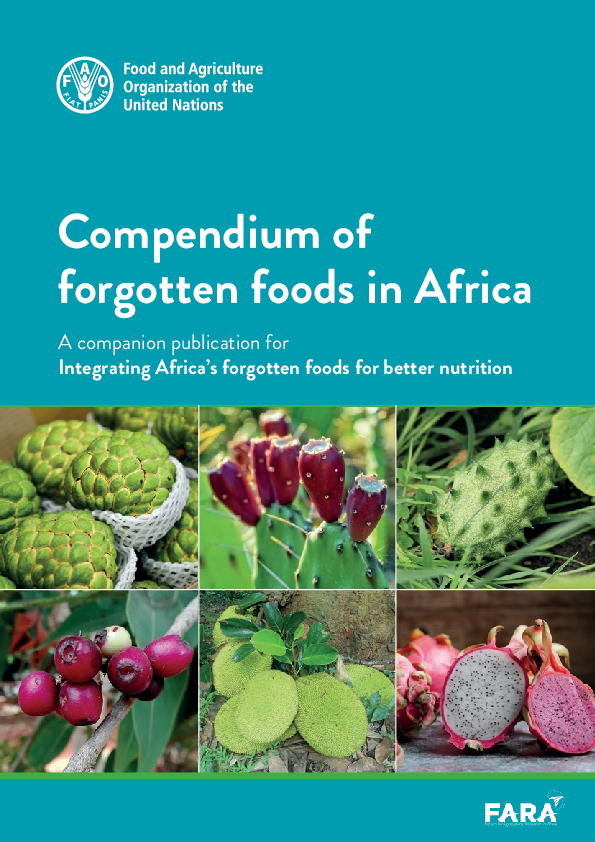- Share this article
- Subscribe to our newsletter
Forgotten foods in Africa
A new Handbook, entitled Compendium of forgotten foods in Africa, aims to support the continent’s way towards more food and nutrition security for its rapidly expanding population without engendering adverse environmental, social and economic externalities. It was published in April 2024.
Produced by the Food and Agriculture Organization of the United Nations (FAO) in partnership with the Forum for Agricultural Research in Africa (FARA), the compendium presents 100 examples of neglected African local foods that have the potential to sustainably provide the much-needed dietary nutrients.
Africa is paradoxically reliant on imported food and home to a disproportionate share of the world’s hungry while at the same time boasting the potential to be a global breadbasket and food superpower. Part of realising that potential depends on tapping the continent’s vast array of food crops, which all too often have been pushed off stage by global commodity foods produced elsewhere.
These include traditional local mainstays such as Bambara groundnut and pigeon peas, superfoods such as fonio or baobab fruit, and naturalised vitamin-rich crops such as amaranth or taro.
The Compendium of forgotten foods in Africa aims to move the needle by identifying so-called orphan foods that very often are “locally adapted and less fastidious than exotic cultivars” such as maize, rice or wheat.
The 100 examples collated in the Compendium, with imagery, agroecological suitability, agronomic requirements, and nutritional qualities, were selected after an initial canvassing of experts around Africa, whose specialties range from value-chain development to genetic improvement. The list will be steadily updated, with forest products likely to figure more prominently over time as the initiative gathers steam.
Sometimes the foods are relatively forgotten due to progressive loss of cultural image in the face of more exotic imported foods, and sometimes they are not forgotten or neglected at all but – like cassava or bush mango – remain traditional crops used in local markets and not used in longer-distance trade. A common attribute, however, is that they have received little or no policy and research attention until now.
(FAO/ile)
Read more and download the Compendium of forgotten foods in Africa on the FAO website





Add a comment
Be the First to Comment